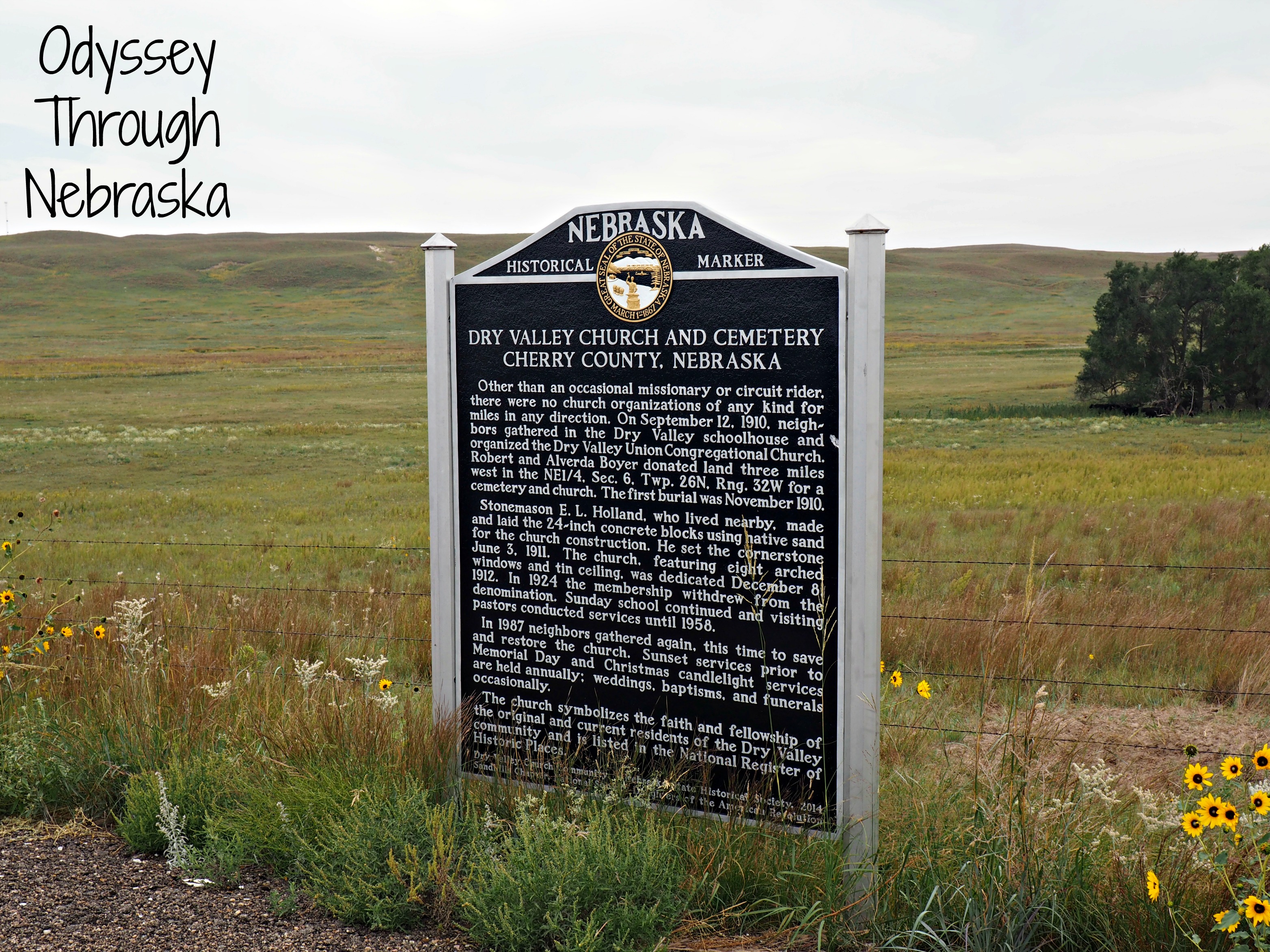Highway 2 in the middle of Nebraska is a bit isolating. The Sandhills can definitely feel that way. Like you are in the middle of nowhere. Evidently over a century ago, the settlers felt the same way. That is why I was intrigued when I saw this Nebraska historical marker for the Dry Valley Church and Cemetery on the side of a stretch of narrow road.
 Dry Valley Church was built because ranchers felt isolated. They need to be a part of a community. Part of their solution was building the Dry Valley Church. This is the text on the sign copied from
Dry Valley Church was built because ranchers felt isolated. They need to be a part of a community. Part of their solution was building the Dry Valley Church. This is the text on the sign copied from
Other than an occasional missionary or circuit rider, there were no church organizations of any kind for miles in any direction. On September 12, 1910, neighbors gathered in the Dry Valley schoolhouse and organized the Dry Valley Union Congregational Church. Robert and Alverda Boyer donated land three miles west in the NE1/4, Sec. 6, Twp. 26N, Rng. 32W for a cemetery and church. The first burial was November 1910.
Stonemason E. L. Holland, who lived nearby, made and laid the 24-inch concrete blocks using native sand for the church construction. He set the cornerstone June 3, 1911. The church, featuring eight arched windows and tin ceiling, was dedicated December 8, 1912. In 1924 the membership withdrew from the denomination. Sunday school continued and visiting pastors conducted services until 1958.
In 1987 neighbors gathered again, this time to save and restore the church. Sunset services prior to Memorial Day and Christmas candlelight services are held annually; weddings, baptisms, and funerals occasionally.
At not quite fifty years old, the church shut its doors. That makes me rather sad. But I am sure for this sparsely populated area, this church was a lifeline when it was open. Although technically this church is not a part of the Prairie Lakes region that I have been covering or the Panhandle region that I am about to cover, its location is close enough that sharing about this church today made sense. After all, if you pinpoint its location, it is about equidistant from both regions.
To visit the actual Deep Valley Church
Although I did see the sign, I did not see the actual building. Evidently the church building is further north of Mullen. Side roads are necessary. For me, the sign came after I had spent a few hours driving with hardly seeing anyone. At all. As this was my last day of travel, I was ready to go home. The only #detourNebraska I wanted to take was one that would help me arrive home quicker. Seeing the Deep Valley Church building was not a part of my plans. But maybe someday I will get to see this location that helped create necessary connections. For more on this site, please visit The Sandhills Scenic Byway website.






Leave A Comment